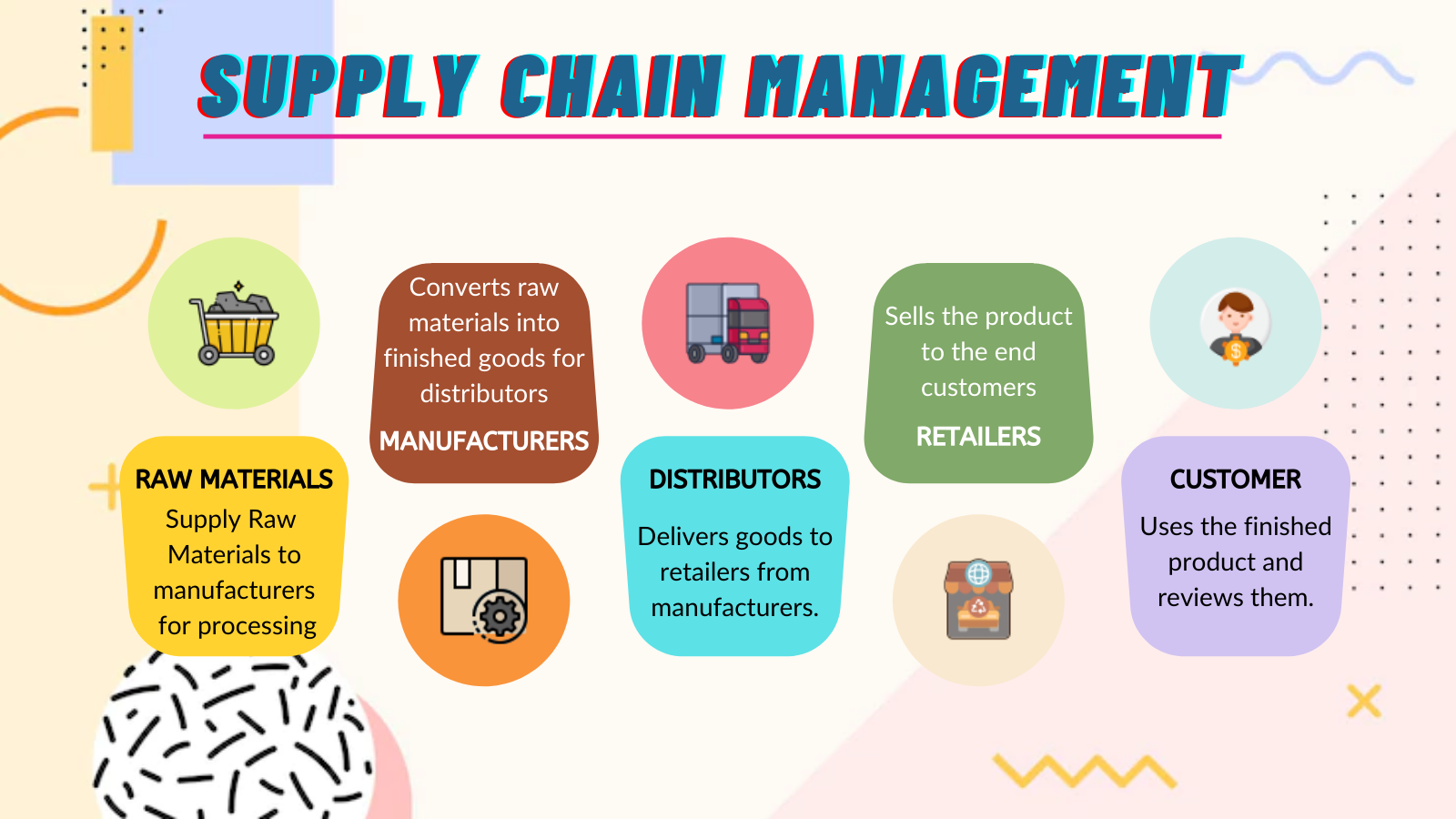What is Supply Chain Management (SCM)?
Supply chain management (SCM) is most likely something you are familiar with if you’re operating a warehouse, business, or distribution center. However, you probably only know one aspect of it. It is not just the flow of goods to and from a business but also includes processes and services that are needed to manufacture resources into products.
There are five parts of SCM that work together:
- Strategy
- Sources (raw materials and/or services)
- Manufacturing
- Logistics
- Return system (for unwanted or defective items)
Additionally, SCM also streamlines the processes in warehouses, distribution centers, and businesses to improve efficiency so that every piece of the supply chain and logistics management can stay competitive. In other words, supply chain and logistics management is what keeps your company from dealing with recalls—and away from lawsuits.
ERP Software and SCM
The supply chain is complex. Hence, business and facilities work in tandem to make sure that the products are ready for customers. Managing every aspect of such an intricate network is near impossible without assistance. This is where the need for a supply chain management software or system is required to simplify tasks.
There are different types of SCM software and ERP systems out there, each offering a wide range of functions to plan out and fulfill every step of production. The various operations carried out in the supply chain & logistics would be involving:
- Raw Materials
- Manufacturers
- Distributors
- Retailers
- Customers
This keeps everything synchronized along the way. Whether you are making or selling products, supply chain management software helps you to effectively track and manage every step of the process. This results in an increased level of customer satisfaction and reduced expenses.
How SAP Business One helps streamline Supply Chain and Logistics
Order fulfillment relies on maintaining an impeccable inventory and warehouse management system. Subsequently keeping track of orders, customers, payments, inventory, and shipments which can’t be done manually.
The manual management of the same is labor-intensive and requires some prohibitory amounts of time. Also, anticipating the right demand for the future is important for cost management and determining the optimal batch size for production. Generally this is the part where there is maximum room for errors of manual management.
Every organization, no matter how large or small, should have real-time supply chain software that connects stakeholders across the organization and integrates S&OP, demand and supply planning, and inventory optimization.
You can easily manage your supply chain with SAP Business One‘s built-in supply chain management (SCM). This ERP software eliminates all confusion from the beginning to the end of the supply chain process.
Manufacturers and distributors often utilize SAP B1 for this demanding task because it provides comprehensive applications for financial accounting, customer relationship management (CRM), inventory management, and so much more, thus allowing enterprise owners to run their entire organization on the same ERP platform.

Different ways SAP B1 enhances Business Logistics and Supply Chain
Creating Immediate and actionable insights
A real-time ERP system uses multiple business intelligence and analytics tools to provide a complete picture of the supply chain at all levels. Therefore, the software tracks the status of the supply chain along with predictions of the future to make quick adjustments.
Developing an extended supply chain
You need to identify every little break in your chain. ERP software does the exact same thing. Just knowing your suppliers is not enough. Monitor full-chain movement of extended suppliers who are also suppliers of your suppliers. You must be able to pinpoint every little break in your chain. ERP software provides the exact same functionality. Know your suppliers, but monitor the full-chain movements of extended suppliers who are also your suppliers’ suppliers.
Manage the supply chain proactively
Keeping tabs on your supply chain can help you avoid contract and inventory errors by planning ahead as well as forecasting potential changes so that you can respond accordingly. SAP B1 real-time analytics can provide you with immediate insight into your supply chain’s status and help you make proactive improvements before problems occur.
Fewer production bottlenecks
By improving demand planning and inventory management, you can keep your production line at peak capacity by assigning products, machinery and labor resources to your production BOM. All the data you have in your ERP system enables you to easily do this. When you have full visibility into purchasing, you are able to identify raw material delays early so you can make adjustments to production capacity and keep lead times to a minimum.
Improved inventory and warehouse management
What’s the key to creating reliable demand forecasts? Regular cycle counts along with tools like barcode scanning increase inventory accuracy and cut audit costs by offering total visibility into your inventory counts, costs, and tracking across multiple warehouses. ERP software such as SAP B1 gives you total visibility of your inventory counts, costs, and tracking across multiple warehouses.
Additionally, ERP software can facilitate optimal warehouse operations including picking, packing, shipping, and receiving. Ultimately, these enhancements benefit your supply chain by helping you fulfill orders faster, which translates into delivering more orders on time and improving customer satisfaction.
More effective demand planning
In order to operate a supply chain effectively, you need to determine when and how much to order each item. That’s easier said than done, particularly when you’re relying on manual demand planning. Your entire supply chain could be thrown off by one incorrect calculation, resulting in delays, upset customers, and bottlenecks in your production line.
Hence, ERP systems allow you to create accurate demand plans using your current inventory levels, sales process, and historical trends. Keeping inventory costs low using this level of demand forecasting is a key benefit.
Why simplify Logistics and Supply Chain with an ERP
A disruption in the supply chain is something that no business or organization wants to happen. While there may be times where it’s impossible to prevent, planning for the future can eliminate delays and keep businesses moving. Fortunately, SAP B1 integrated with Supply Chain Management software provides valuable insight that can help you prepare by showing real-time analytics and the status of your entire supply chain throughout the day. Based on that, you can forecast what will happen and react accordingly.
It is not just about getting the order delivered on time. Everything must be done right through the supply chain in order for the entire process to be productive, efficient, and reliable. Utilizing ERP software like SAP B1 will help your business run better, and you’ll also have happier customers.
When you implement an ERP solution, you’ll see benefits across the supply chain, such as:
- Building internal skill sets to support your organization’s digital transformation
- Ensure project alignment with your strategic goals
- Greater employee engagement and satisfaction
- Faster solution deployment
- Maximize user productivity and streamline business process execution
Optimizing your supply chain process with SAP SCM can transform the way you do business. With functionalities such as production planning, business forecasting, and demand planning, your organization can manage your supply chain operations effectively and efficiently.
We at Skysurge, provide Business One, an SAP Integrated Supply Chain Software for all your inventory management, warehouse management, logistics, shipping modes etc.

